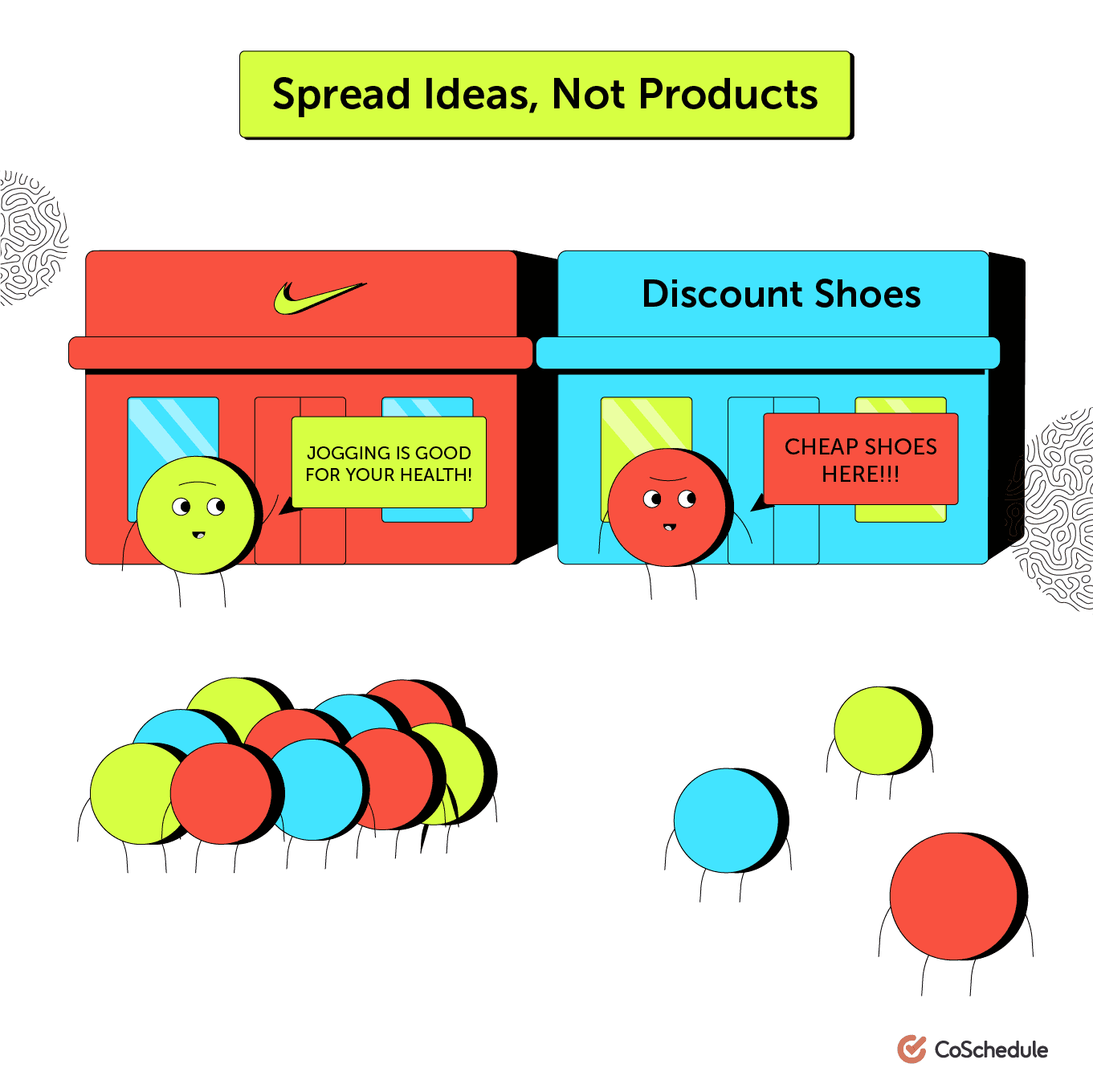Nike Marketing Strategy: How to Build a Timeless Brand
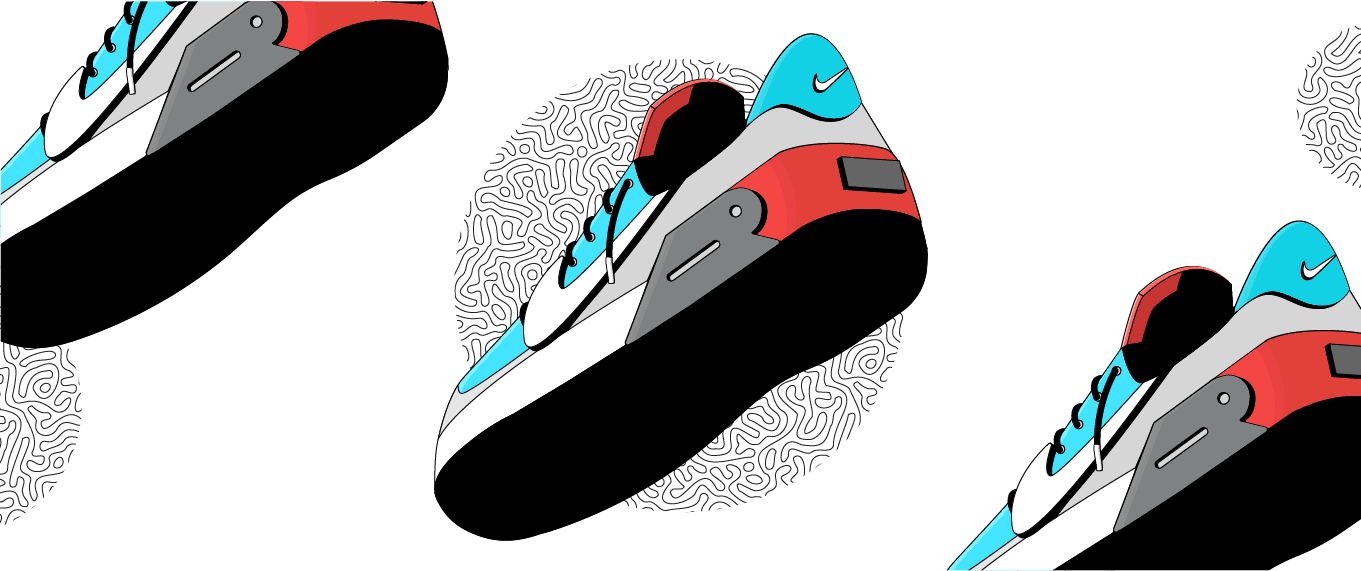 We all think we know the classic Nike marketing strategy.
"Just do it" comes to mind pretty quickly, as do Air Jordan sneakers, famous athlete endorsements, and the swoosh logo. But is that really all there is to what Nike is doing? Or, is there something deeper behind their strategy and tactics?
The marketing from Nike that most of us recognize isn't the one that made them famous, at least not in the early days. Discovering what first put them on the map is where the gold is. Furthermore, just like any true content marketing strategy, it isn't really much of a "strategy" at all. Like many similar success stories, it was as simple as providing real customer value.
We all think we know the classic Nike marketing strategy.
"Just do it" comes to mind pretty quickly, as do Air Jordan sneakers, famous athlete endorsements, and the swoosh logo. But is that really all there is to what Nike is doing? Or, is there something deeper behind their strategy and tactics?
The marketing from Nike that most of us recognize isn't the one that made them famous, at least not in the early days. Discovering what first put them on the map is where the gold is. Furthermore, just like any true content marketing strategy, it isn't really much of a "strategy" at all. Like many similar success stories, it was as simple as providing real customer value.
How @Nike Built a Timeless Brand by Selling Benefits via @CoSchedule
Click To TweetThe First Nike Marketing Strategy
Bill Bowerman was a track and field coach, as well as one of the co-founders of Nike. In the mid-1970's, he began experimenting with his wife's waffle maker to design a better tread for running shoes. As the story goes, he ruined the waffle maker but invented a brand new type of shoe. He later used that design to create the first Nike shoe commonly referred to as the "Nike Moon shoe." It was the first step of many that put Nike on the map, but there is more to the story than just a great tread design and a waffle maker. There's also the story of Nike's incredible, if not accidental and seemingly counterintuitive, approach to promoting their product. Bowerman, you see, is also credited as the man who brought about the jogging craze that swept America in the late 1960's and 70's. While you would think that jogging wasn’t something that needed to be invented, it wasn’t all that popular as an exercise or activity at that time. Bill’s work and research truly brought jogging out of obscurity and to the forefront of the minds of the public. After observing a jogging club in New Zealand, Bill began to understand the value of jogging as a traditional fitness routine. Bill immediately began writing articles and books about jogging and how it could be used as part of a fitness program. His first three-page pamphlet was called the Jogger’s Manual and was later expanded into a 90-page book (see below) that he wrote along with an experienced cardiologist.
After observing a jogging club in New Zealand, Bill began to understand the value of jogging as a traditional fitness routine. Bill immediately began writing articles and books about jogging and how it could be used as part of a fitness program. His first three-page pamphlet was called the Jogger’s Manual and was later expanded into a 90-page book (see below) that he wrote along with an experienced cardiologist.
 Along with Bill's other involvements with professional athletes, his work helped inspire the 1970's running boom that Nike clearly benefited from.
Was this the result of a strong marketing strategy
Or was it just a coincidence?
The answer is probably a mix of both.
It would be really great to point to Bowerman's story as a case-in-point example of content marketing at its finest, but it is difficult to do. The book was technically released before the first pair of shoes, and even before he invented the waffle tread. So, if it wasn't true content marketing, what was it and how did it even work?
Along with Bill's other involvements with professional athletes, his work helped inspire the 1970's running boom that Nike clearly benefited from.
Was this the result of a strong marketing strategy
Or was it just a coincidence?
The answer is probably a mix of both.
It would be really great to point to Bowerman's story as a case-in-point example of content marketing at its finest, but it is difficult to do. The book was technically released before the first pair of shoes, and even before he invented the waffle tread. So, if it wasn't true content marketing, what was it and how did it even work?
1. Put Customer Interests First
Customers like great products and they like serious benefits. For them, things that benefit them personally are easy to justify. The Nike Moon shoes did this, but only because the customer was beginning to understand jogging and its benefits for their health. Bill's secret goal wasn't to sell shoes, he was simply promoting something that he believed in. This may not sound like a marketing strategy, but it certainly should.2. Base Your Strategy On A Felt Need
Initially for Nike's audience, the felt need wasn't for better running shoes, but for a better way to get in shape. Certainly, running was already popular among kids and athletes in the 1970's, but it wasn't the widespread social activity that we see today. The growing white-collar workforce helped pave the way for social activities that included the promotion of cardiovascular health. Once the trend was ingrained, the need shifted and the "jogging shoes" themselves became the felt need.3. Believe In the Product You Are Selling
It's unlikely that Bowerman's original goal was to become a millionaire as he penned the pages of his first jogging pamphlet. That wasn't why he did what he did. His only goal was to promote a sport and an idea that he believed in. As marketers, shouldn't we believe in the product and the ideas we are selling? For Bowerman, it sure made marketing a lot easier. He was "marketing" without even realizing what he was up to.4. Sell Easily Identifiable Benefits Instead Of The Product
While jogging is pretty easy to understand, the waffle tread isn't (at least not until you understand why Bowerman made it in the first place). His goal was to make the world's most light–weight running shoe. He believed that this factor alone could dramatically improve the speed of a distance runner. His product worked and quickly gained the industry respect that it deserved.
How Nike’s Marketing Strategy Evolved
As the marketing landscape has changed since the 70s, so has the Nike marketing strategy. In fact, it’s remarkable how well the brand has adapted its approach to new trends and technologies without losing the core of their identity or brand voice. It’s key to understand that while their general aesthetic and tactics have changed with the times, their customer-centric messaging has remained consistent.1. Embrace New Technologies
While Nike's early marketing strategy centered on print publications, they later went on to dominate other mediums, like television in the 80s and 90s, through modern social media platforms today.2. Adapt To The Needs Of Your Audience
Nike hasn’t historically adopted new communication platforms for their marketing just because they’re chasing new, flashy objects. Far from it. Rather, they’ve been quick to conquer new mediums because they’re where their customers are. For example, take a look at their Instagram profile. They know their core demographic includes heavy Instagram users and so it makes sense for their brand to maintain a presence there. However, they also make sure that everything they post provides value. Rather than interrupting the flow of their follower’s feeds with flagrant sales pitches, they share motivational messaging. Other posts subtly tie into the brand’s history and their sponsored influencers while directing users to interest–specific Nike sub-accounts on Instagram. In this case, they could have simply said something to the effect of, “Check out our women’s footwear and apparel profile, and our general running product profile." Instead, they went the extra mile and created something memorable and entertaining while staying relevant to what their audience wants to see.3. Stay True To Your Sense Of Purpose
They say the more things change, the more they stay the same. For Nike, that has certainly remained true. Throughout their current content marketing initiatives, Nike makes sure their brand message hasn’t gotten lost over time or across channels. They focus their emphasis on creating content that promotes the benefits of their products, rather than the features. Helping their customers be better at what they love to do is still the focus of their branding and message. By moving their content marketing to the platforms where their customers are, it shows that they are keeping their audience’s needs in mind while staying true to themselves. Nike's marketing strategy has succeeded in sustaining a global brand while many of their competitors have come and gone from the spotlight.Modern Examples of Nike’s Benefit & Use-Centric Marketing
Across all their channels, Nike’s marketing strategy has stayed consistent since their founding: promote the benefits and use cases for products, rather than the products themselves. Today that looks a little different than it did when Bowerman first published his jogging pamphlet, but the general idea stays the same.Nike on Instagram
This post from Nike’s main Instagram account is a great example. They build the perception of their brand as forward-facing and promoting a future with sustainability and a focus on the health benefits of sport. As you will see in other examples, this post never promotes a Nike product. Rather, they focus on their brand perception and framing themselves as progressive within the context of modern sporting debates.Nike’s Email Marketing
 This email example from Nike shows how their brand uses notable sporting influencers (Coach K) and their global community to promote themselves as a leader in sports. This framing makes it so that when people think sports, they think Nike. When your brand is one of the first to mind within your niche, your audience will be likely to make purchases from you when they need to.
And again, you never need to promote your product.
This email example from Nike shows how their brand uses notable sporting influencers (Coach K) and their global community to promote themselves as a leader in sports. This framing makes it so that when people think sports, they think Nike. When your brand is one of the first to mind within your niche, your audience will be likely to make purchases from you when they need to.
And again, you never need to promote your product.
Nike on TV
This recent TV ad from Nike shows how they use their influence within the sporting world to frame themselves as a positive influence within the context of some timely national issues. This ad puts the spotlight on black women in sports, a group which historically has not been treated with the same level of respect as their male and white counterparts. This sort of messaging is common from Nike these days, and has made the brand a representative for broader social movements which their customer base can get behind. They are selling a movement, not a product, and are starting positive conversations in the process. Now that’s providing value through content.Nike's Marketing Mix (The Four Ps)
While these promotional activities work well to help understand Nike's marketing strategy, it helps to understand the marketing mix in which they are used.Product
Nike sells sporting and athletic shoes, apparel, equipment, and accessories. The brand has also expanded into more fashionable clothing lines in recent years, though their niche is still athletic apparel.Price
Nike implements both value-based and premium pricing strategies to price and sell their products. Value-based pricing uses consumer perception to determine the maximum price consumers are willing to pay for their products. Premium pricing, on the other hand, comes into play when you consider Nike’s use of celebrity endorsements and influencer marketing, which positions Nike as a premium brand which is worth paying premium prices for.Place
Nike sells its products through three main sources: retail stores, Nike’s online store, and company-owned retail outlets. Using retail stores is an effective strategy for Nike because it allows them to meet their consumers where they are without investing exorbitant amounts of money opening a chain of brand-specific stores. Their online store allows for more options than retail stores, but are at a disadvantage because consumers are unable to see the products in person and try them out before purchasing. Nike’s retail outlets act as another way to reach customers, and often have lower prices than regular retailers. They are, however, limited in location and access to populations.Promotion
Nike relies heavily on advertisements to promote their products, especially those featuring high-profile athletes and celebrities. Additionally, Nike makes use of sales promotion strategies like discount codes to entice potential customers to buy their products.How To Apply The Nike Marketing Strategy To Your Own Brand
The history of Nike’s marketing strategy is interesting in itself. What you probably want to know at this point is how to apply these lessons to your own work.1. Figure Out The Needs Of Your Audience
Your audience is on the Internet because they’re looking for answers to questions. One way to position your brand or blog as an authority on your topic or market is to create compelling content that addresses those concerns. Doing this well means understanding exactly what your audience’s goals are and what they want to know, and then being there to answer and give solutions when they need them. Do this well enough, and you might even turn readers into passionate brand advocates. In Nike’s case, people were looking for new ways to stay in shape. As jogging became more popular, people needed jogging shoes. Nike then smartly positioned themselves not just as a company that made shoes, but a company that helped their customers achieve their fitness goals (and just happened to make shoes that supported that goal).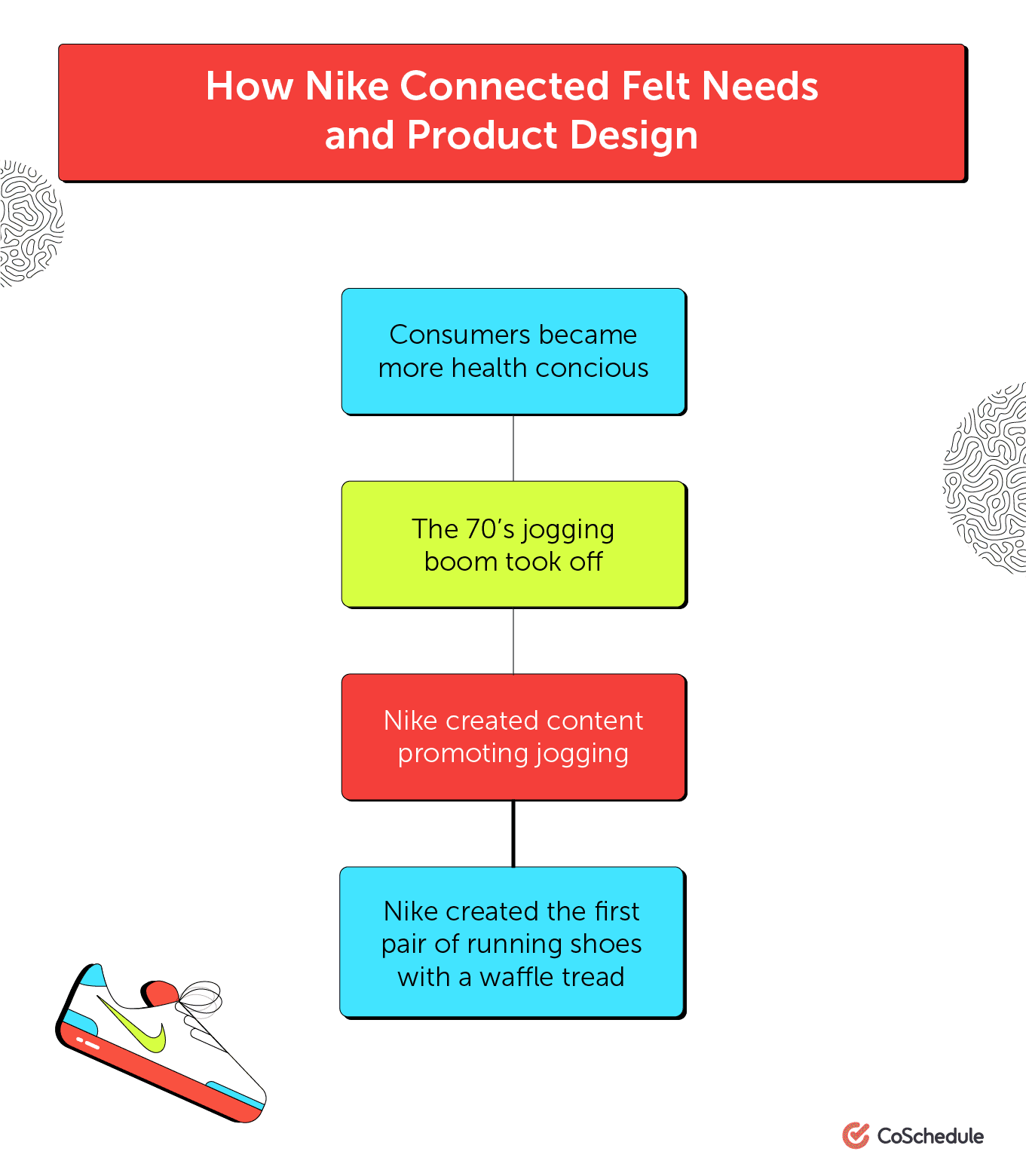 If you’re unsure what your audience is really looking for, try putting yourself in their shoes for a moment (no pun intended) and think beyond the scope of your product or service. Instead of thinking about your product’s features or competitive advantages, think about what goal your customer is trying to achieve. Then, be there with the information, products, and services they need to make it happen.
This means you need to do your research first.
If you’re unsure what your audience is really looking for, try putting yourself in their shoes for a moment (no pun intended) and think beyond the scope of your product or service. Instead of thinking about your product’s features or competitive advantages, think about what goal your customer is trying to achieve. Then, be there with the information, products, and services they need to make it happen.
This means you need to do your research first.
2. Figure Out The Best Way To Reach Your Audience
In terms of your blog and overall digital marketing efforts, this means that you need to figure out where your audience hangs out on the Web and how you can best reach them there. Which social networks are they most active on? Should you pay to promote your content on those networks? Does an email newsletter make sense for your customers? Could print collateral be something they’re interested in? These are big questions to answer, but the key point to remember is that it's important to go where your audience is. Before considering any content distribution tactic, think about your customer’s habits, what types of content they prefer, and where they prefer to find it. Make sure you're thorough in your approach when it comes to doing everything you can to spread your content.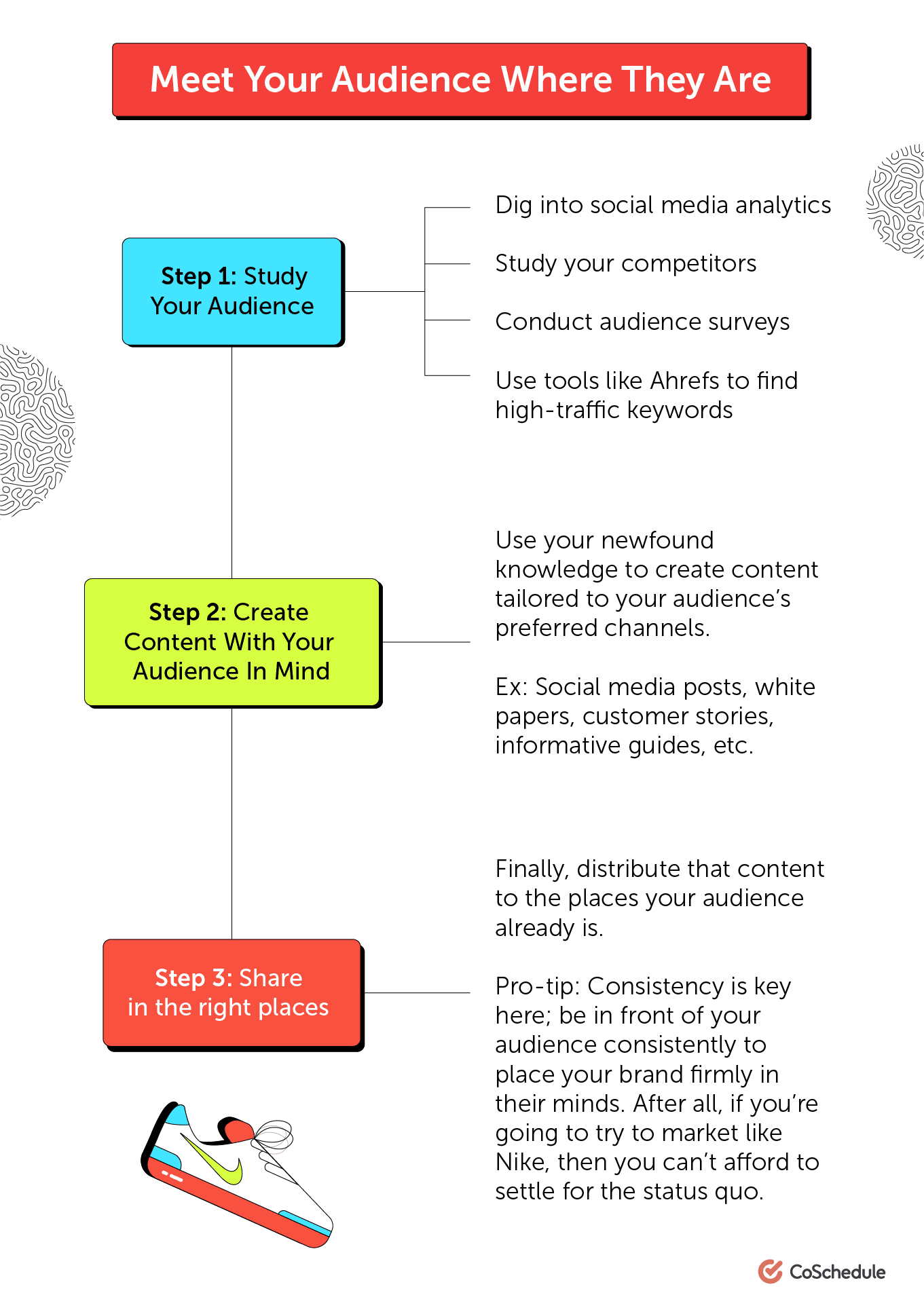 After all, if you're going to try to market like Nike, then you can't afford to settle for the status quo.
After all, if you're going to try to market like Nike, then you can't afford to settle for the status quo.
3. Create Compelling Content That Addresses Audience Needs
Whether it’s on your blog, social media channels, video platforms, or print collateral, every piece of content you create should address customer needs. Not only that, but you need to be creating the best content on your topic anywhere on the Web. If you’re not answering questions, solving problems, being entertaining, or otherwise helping your audience be better at doing what they love, then it’s time to rethink your approach. If you’re unsure of what your customer’s real needs are, consider everything from simple keyword research to surveys to get a better idea of what kind of content you can create that they’ll find valuable. This process should give you a good visualization of how you can go about this content marketing process: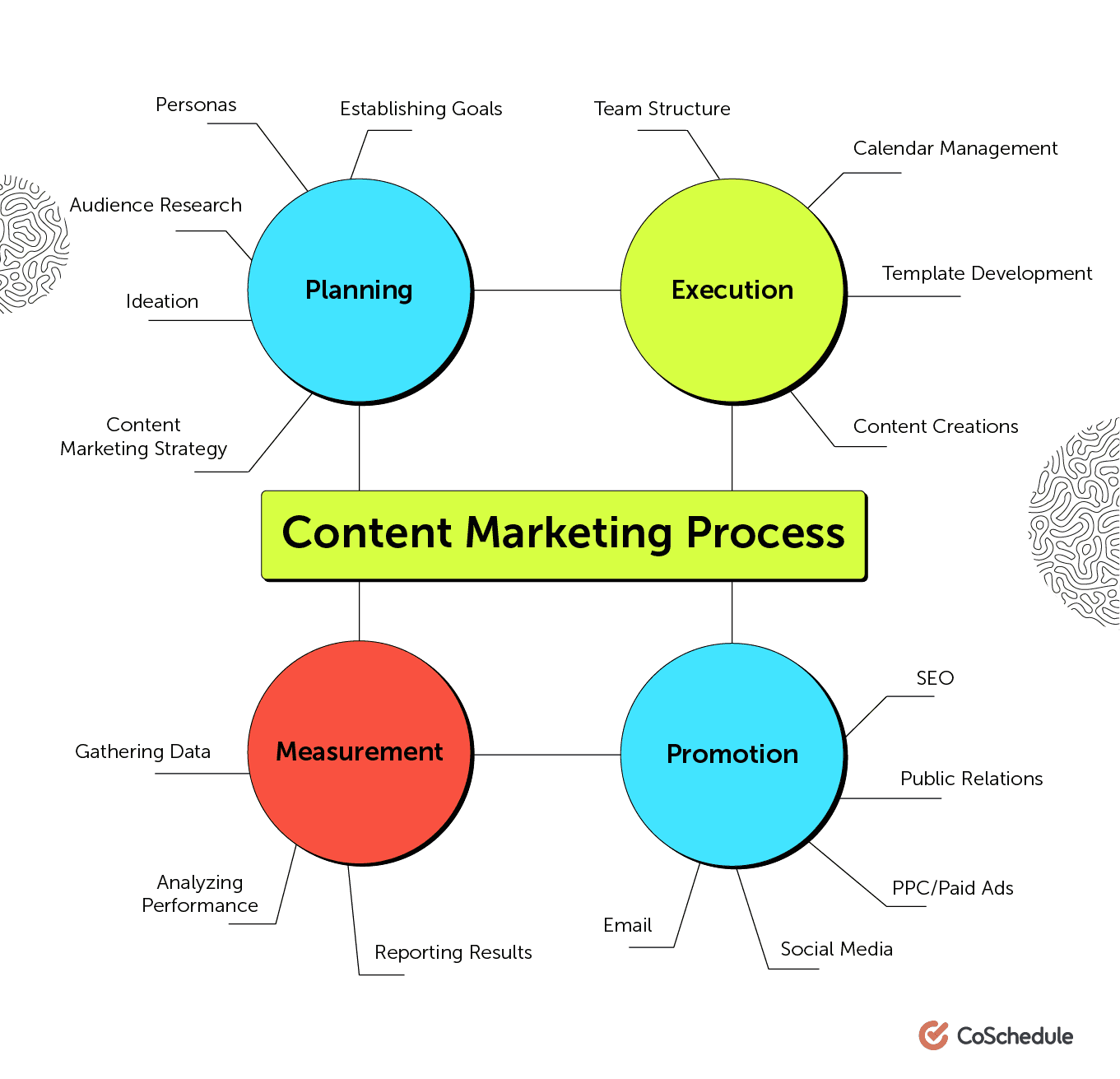 You'll also want to consider what content creation budget and resources you have available.
You'll also want to consider what content creation budget and resources you have available.
Key Takeaways About Nike’s Marketing Strategy To Grow Your Brand
If this all seems like a lot of information to take in, that's because it is. If there's just one thing you remember from this post, however, it's the idea of creating content that spreads, instead of content that just sells.The Benefits Of Not Selling
Here's the cool thing: Bill didn't sell shoes; he didn't need to. Instead, he sold jogging and all of the benefits that came with it. This should make us pause as marketers. Instead of selling our products we should be selling the benefits that products like ours promote. Running shoes matter to people who jog, so selling them on jogging is always a good first step. The same goes for us here at CoSchedule. We sell a family of marketing software products that help marketing teams get organized and do better work. The more people that need to organize and plan their business marketing operations, the more copies of our software we sell. We also gain the added benefit of understanding why our customers buy what we are selling in the first place. Even in the world of content marketing, there is a lot of selling. This is fine, but it misses the real point that Bowerman so aptly understood: spread ideas, not products.